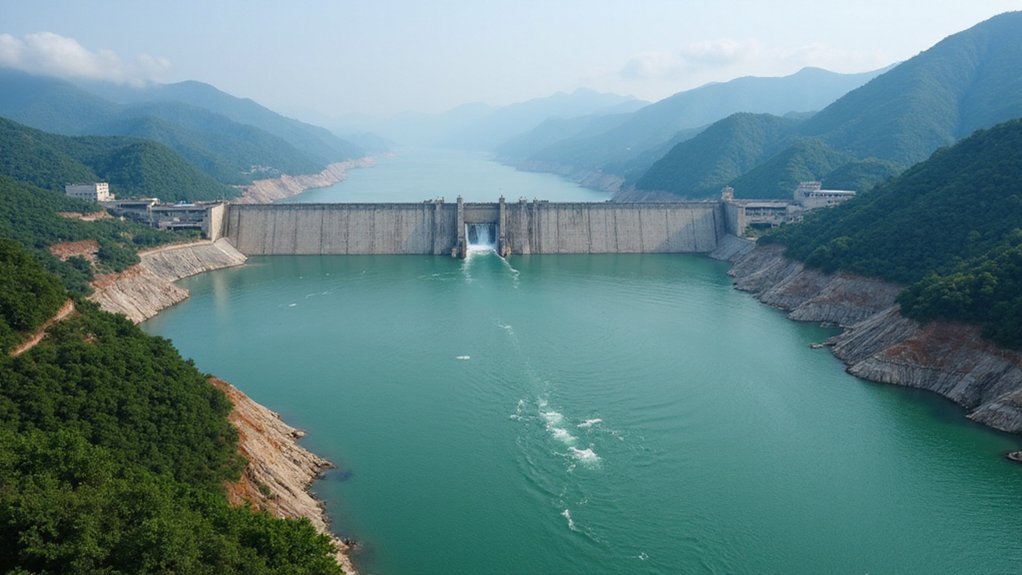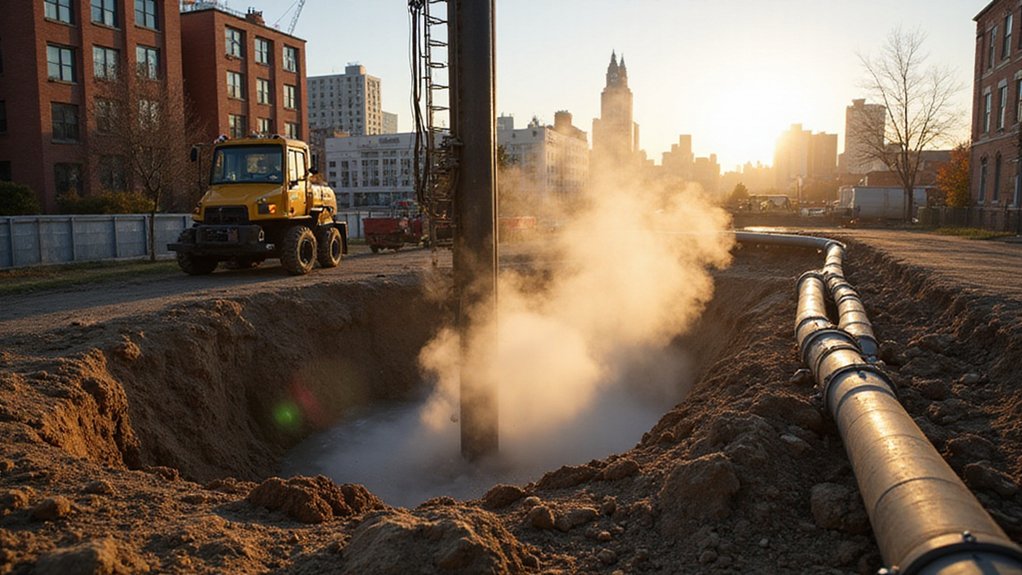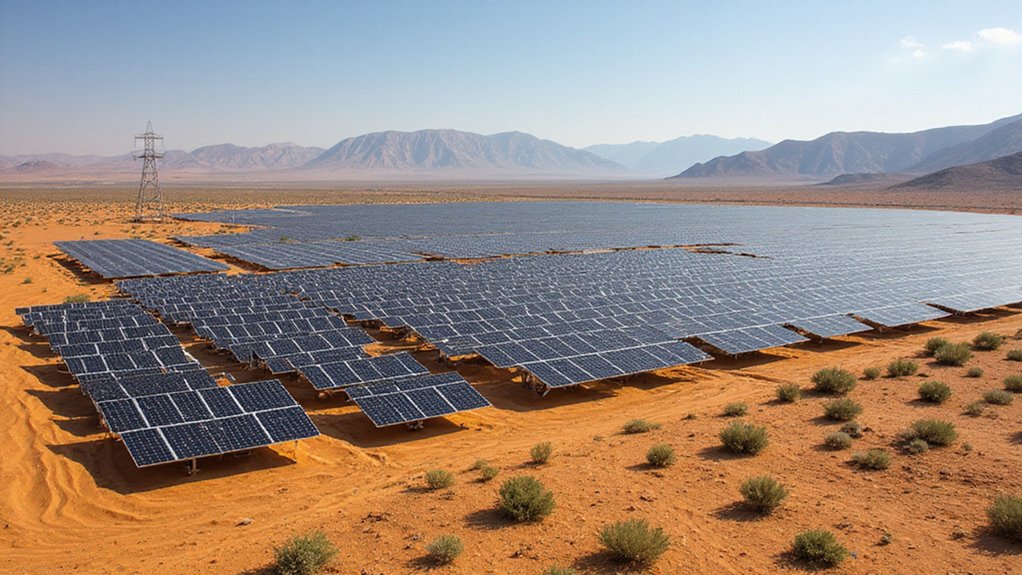While most countries struggle to build basic infrastructure, China has been busy constructing the world’s largest dam. The Three Gorges Dam stands as a symbol of human engineering—610 feet high and stretching 1.3 miles across the Yangtze River. It’s massive. Ridiculously massive. Construction began in 1994 and took 12 years to complete. Because apparently, China wasn’t content with normal-sized dams.
The numbers are mind-boggling. This concrete monster holds 10 trillion gallons of water. That’s trillion with a “T.” The reservoir stretches nearly 400 miles upstream, covering 405 square miles. The river rises 175 meters behind the dam. Local fish probably think they’ve been transported to another planet.
Power generation? Yeah, it’s got that too. With 22,500 megawatts of generating capacity, it produces 11 times more power than the Hoover Dam. It became the world’s largest hydroelectric plant in 2012. The dam reached a record-breaking 111.88 terawatt hours of electricity generation in 2020. Theoretically, it could power all of China. Theoretically.
But there’s a dark side to this engineering marvel. Shocking, right? The dam has created its own microclimate, caused erosion and landslides, and threatened one of the world’s largest fisheries in the East China Sea. Multiple animal species are now closer to extinction. The river flow patterns have changed downstream. Nature doesn’t appreciate being messed with on this scale.
Then there’s the human cost. 1.3 million people were forced to relocate. Three cities, 114 towns, and 1,680 villages—all underwater now. Traditional river-based lifestyles? Gone. Ancient cultural artifacts and archaeological sites? Submerged forever.
The dam even causes earthquakes. Small ones, but still. Seismic activity has increased. Landslides are more common. The sedimentation patterns of one of Asia’s most important rivers have been fundamentally altered. Though it has its downsides, the dam’s flood control capacity of 22.15 billion cubic meters helps protect millions of lives downstream. Unlike the rapid battery storage expansion seen in the U.S. renewable sector, China’s focus remains primarily on massive hydroelectric projects.
China built a dam and reshaped a continent. Progress comes at a price. In this case, the bill includes ecosystems, species, human communities, and cultural heritage. But hey, at least they’ve got electricity.
References
- https://www.britannica.com/topic/Three-Gorges-Dam
- https://eros.usgs.gov/earthshots/three-gorges-dam-china
- https://www.travelchinaguide.com/river/three-gorges-dam-facts.htm
- https://www.montana.edu/rmaher/engr125_fl06/Three Gorges Dam.pdf
- https://blog.indovance.com/10-facts-about-three-gorges-dam-that-slowed-the-earths-rotation/









